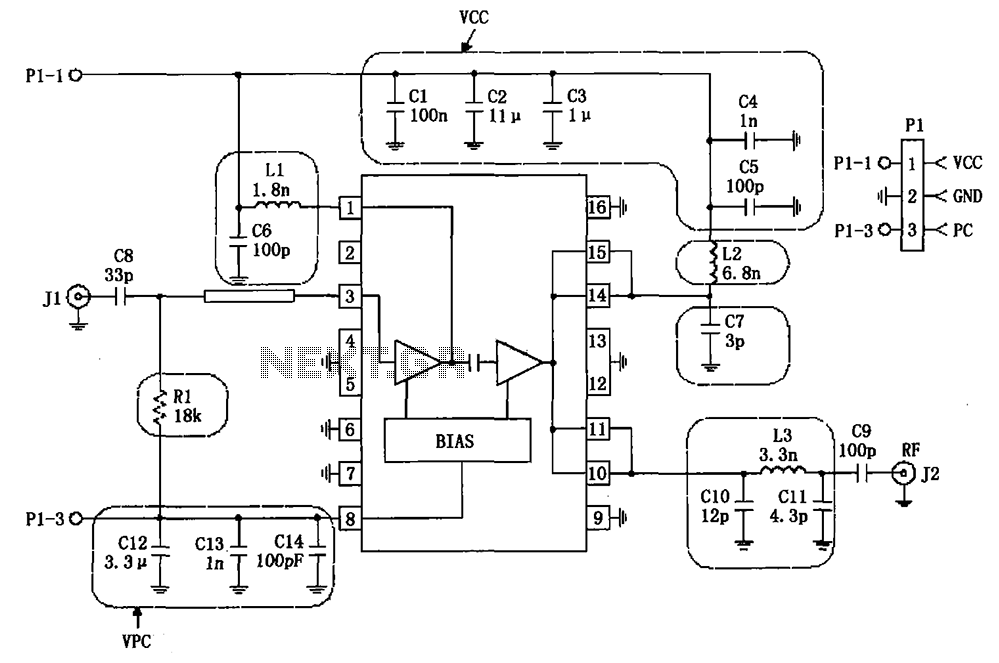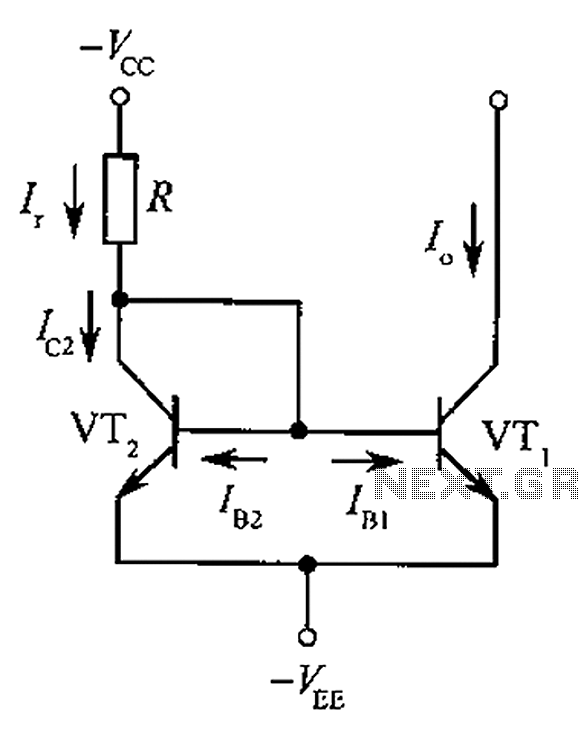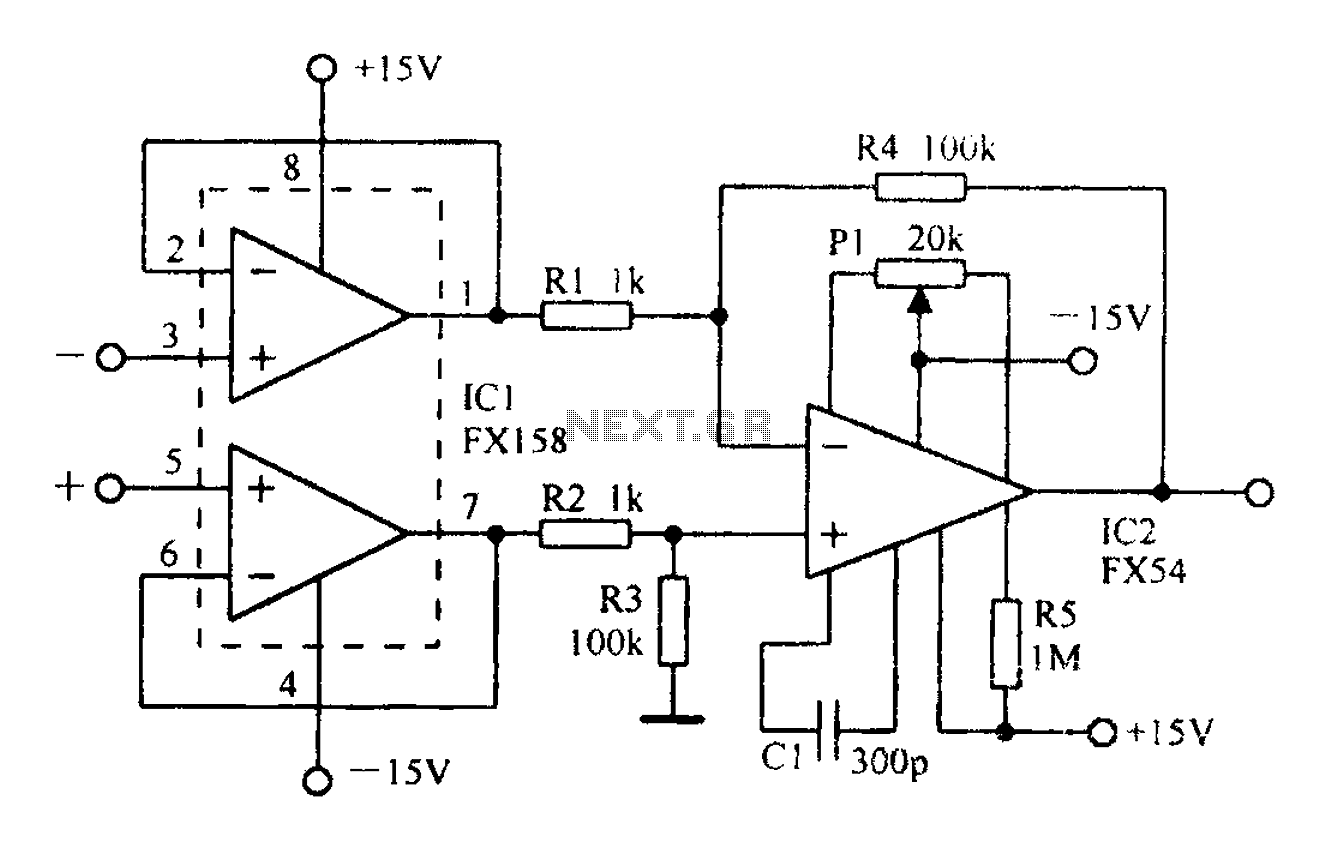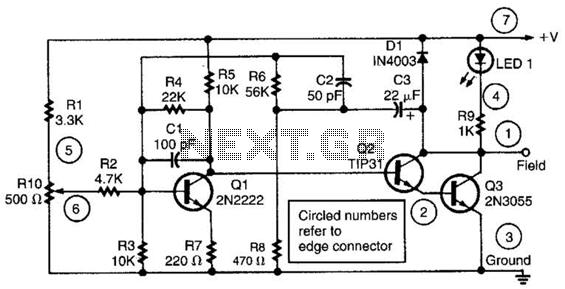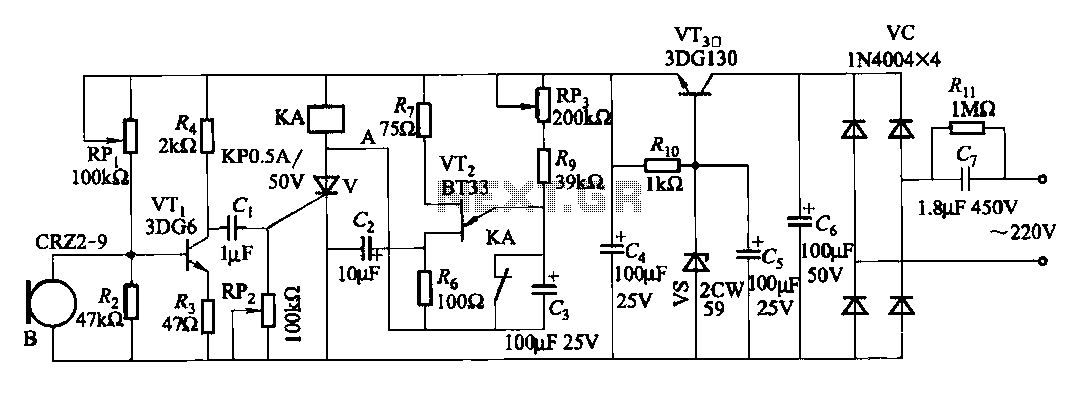
Transistor Circuit Analysis
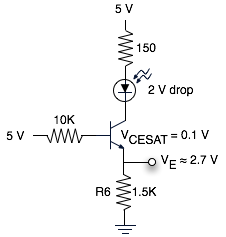
The schematic represents a relatively simple transistor circuit. Analyzing such schematics evokes memories of college days spent studying electrical engineering. However, the complexity of the schematic can be daunting after a long time away from the subject. To refresh knowledge, old textbooks were consulted, but they proved challenging to comprehend. Fortunately, online resources provided clearer instructions on transistor circuit analysis, particularly from the EECS 312 course at the University of Kansas. The transistor in question operates in saturation mode, with the calculated emitter voltage approximately 2.7 V. A measurement taken with an oscilloscope indicated a voltage drop of 2.72 V, demonstrating a close alignment between theoretical calculations and practical measurements.
The described circuit utilizes a bipolar junction transistor (BJT) configured in saturation mode, which is commonly used in switching applications. In this configuration, the transistor is fully turned on, allowing maximum current flow from the collector to the emitter. The emitter voltage of approximately 2.7 V suggests that the transistor is indeed in saturation, as this value is consistent with typical V_BE (base-emitter voltage) values for silicon transistors.
To analyze the circuit further, key parameters such as the collector current (I_C), base current (I_B), and load resistance (R_L) should be considered. The relationship between these currents can be expressed using the transistor's current gain (β), where I_C = β * I_B. The load connected to the collector will determine the overall performance of the circuit, including power dissipation and switching speed.
The measurement of 2.72 V across the emitter, verified with an oscilloscope, indicates that the circuit operates effectively within its designed parameters. This close match between calculated and measured values is crucial for validating circuit designs and ensuring reliability in practical applications. The use of an oscilloscope allows for real-time observation of voltage changes, which is essential for troubleshooting and optimizing circuit performance.
In conclusion, this simple transistor circuit exemplifies fundamental principles of electronic design and analysis. Understanding the interplay between theoretical calculations and practical measurements is vital for success in the field of electronics, particularly in applications involving BJTs in saturation mode.The schematic is this fairly simple transistor circuit: Seeing schematics with transistors in them brings back a flood of memories to my college days when I was taking EE classes and I used to know how to do this stuff in my sleep. Unfortunately, that was about 15 years ago, and now a schematic like that looks like gibberish. It was bugging me that I used to be able to figure this stuff out, so I pulled out my old textbooks. Those were nearly as incomprehensible as the schematic, unfortunately. Luckily we have teh internets these days, and I found instructions on transistor circuit analysis that I could actually understand on the website for EECS 312 at the University of Kansas. Kudos to Prof. Stiles for making this understandable. This transistor is in saturation mode, and I calculated the emitter voltage to be about 2. 7 V. I measured the voltage drop to be 2. 72 V with the scope, which you can see on the right side of the scope`s screen in this picture. It`s nice when theory and practice align. It`s even nicer when I don`t have to show my work. 🔗 External reference
The described circuit utilizes a bipolar junction transistor (BJT) configured in saturation mode, which is commonly used in switching applications. In this configuration, the transistor is fully turned on, allowing maximum current flow from the collector to the emitter. The emitter voltage of approximately 2.7 V suggests that the transistor is indeed in saturation, as this value is consistent with typical V_BE (base-emitter voltage) values for silicon transistors.
To analyze the circuit further, key parameters such as the collector current (I_C), base current (I_B), and load resistance (R_L) should be considered. The relationship between these currents can be expressed using the transistor's current gain (β), where I_C = β * I_B. The load connected to the collector will determine the overall performance of the circuit, including power dissipation and switching speed.
The measurement of 2.72 V across the emitter, verified with an oscilloscope, indicates that the circuit operates effectively within its designed parameters. This close match between calculated and measured values is crucial for validating circuit designs and ensuring reliability in practical applications. The use of an oscilloscope allows for real-time observation of voltage changes, which is essential for troubleshooting and optimizing circuit performance.
In conclusion, this simple transistor circuit exemplifies fundamental principles of electronic design and analysis. Understanding the interplay between theoretical calculations and practical measurements is vital for success in the field of electronics, particularly in applications involving BJTs in saturation mode.The schematic is this fairly simple transistor circuit: Seeing schematics with transistors in them brings back a flood of memories to my college days when I was taking EE classes and I used to know how to do this stuff in my sleep. Unfortunately, that was about 15 years ago, and now a schematic like that looks like gibberish. It was bugging me that I used to be able to figure this stuff out, so I pulled out my old textbooks. Those were nearly as incomprehensible as the schematic, unfortunately. Luckily we have teh internets these days, and I found instructions on transistor circuit analysis that I could actually understand on the website for EECS 312 at the University of Kansas. Kudos to Prof. Stiles for making this understandable. This transistor is in saturation mode, and I calculated the emitter voltage to be about 2. 7 V. I measured the voltage drop to be 2. 72 V with the scope, which you can see on the right side of the scope`s screen in this picture. It`s nice when theory and practice align. It`s even nicer when I don`t have to show my work. 🔗 External reference

